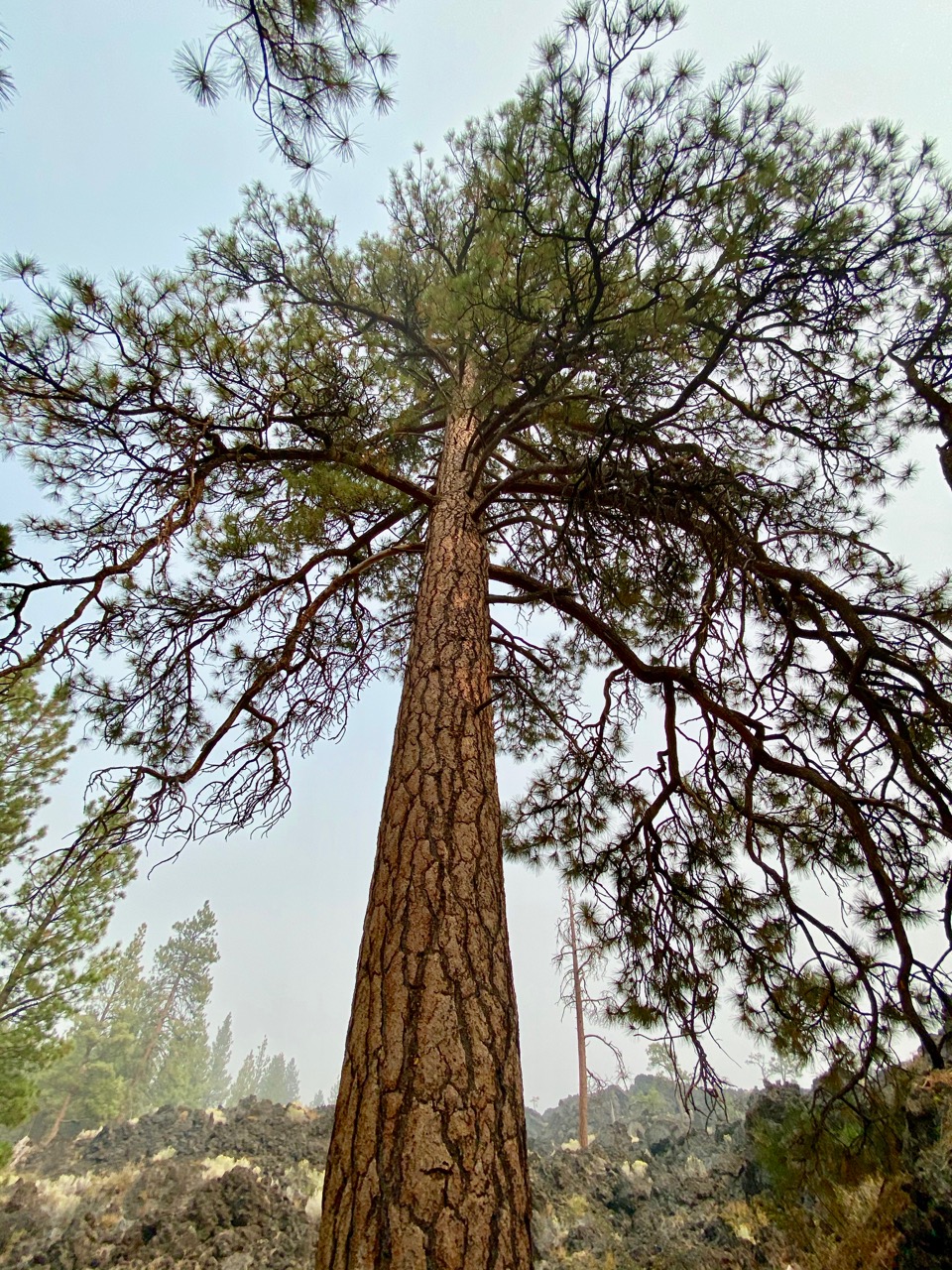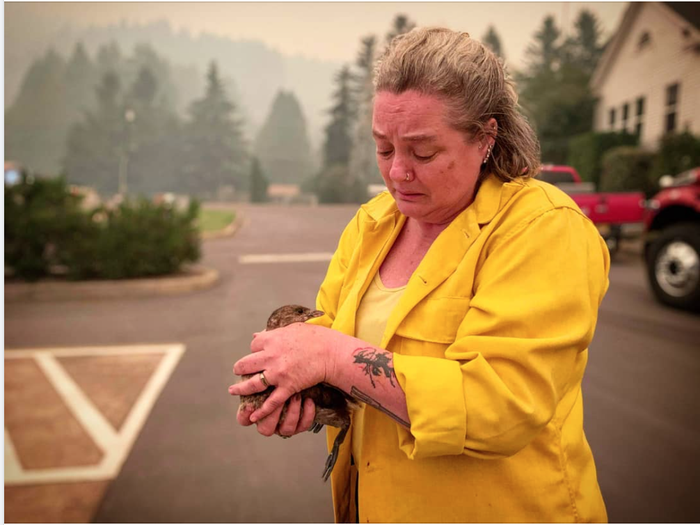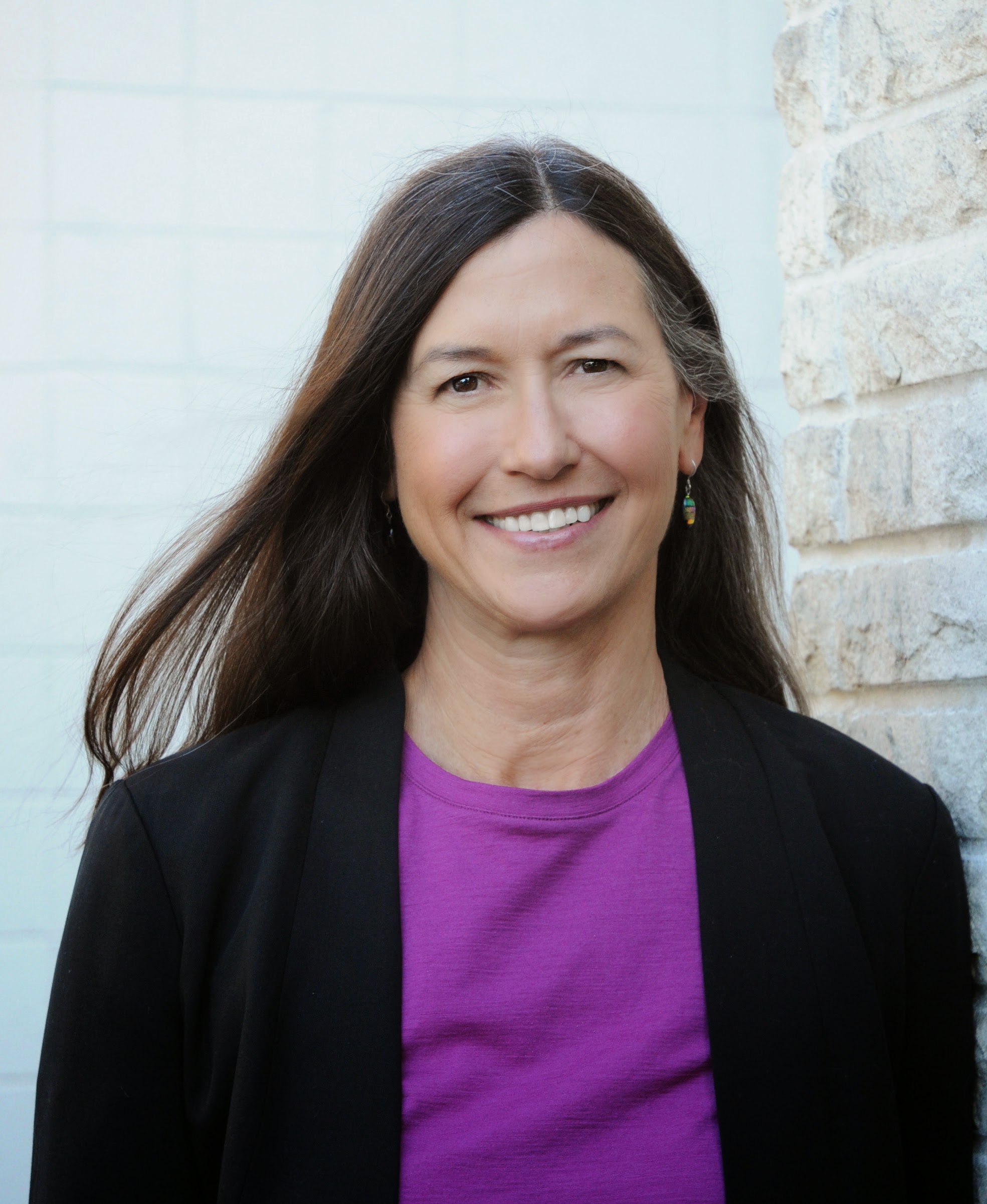Here in Bend, Oregon, we’re safe so far from the wildfires, but the smoke is thick and our air quality is hazardous to breathe. Over the weekend, I braved a dog walk with a double mask. Without choosing my course, I found myself where I was meant to be–touching the thick, fire-resistant bark of the biggest ponderosa pine in our neighborhood.
While I’ve long loved the vanilla scented big pines with their amber hues and crowns rising to the sky far above, I’m seeing them as if the first time, and accentuated by the human-induced climate crisis that’s the true culprit of this smoke.
Every tree on the landscape is our ally –quietly retrieving the carbon dioxide that’s warming our planet, and storing it for us and future generations. And here’s the thing–big trees stockpile WAY more carbon than young trees and for a very long time. A two-foot diameter tree safeguards about 1.5 tons of carbon and a five-foot tree-diameter tree close to 20 tons–and that’s just the above ground storage. Below ground, roots harbor carbon–and even share carbon and nutrients with other trees through fungi called mycelium.

With the wildfires still burning and people in harm’s way, now is also the time to show our gratitude. Here’s to the brave firefighters who are putting themselves in harm’s way to save homes and iconic places people love like Silver Falls State Park near Salem. And a special showing of our care for those firefighters who lost their homes and never faltered in their exhausting work on behalf of others–like Upper McKenzie Fire Chief Christiana Rainbow Plews, who lost her home, as did four other volunteer firefighters.

Here’ to all the individual acts of heroism, like that of the retired plant scientists–Sue McAllister and Michael Palmer--who risked their lives to save their 90-year-old neighbor and escape together as wildfires engulfed their homes in Blue River.
This is the time, too, to honor conservationist George Atiyeh, who remains missing after wildfires burned his home near Opal Creek Wilderness–the forest primeval that he led the charge to save in the 1980s and is now within the Beachie Creek fire. And let’s celebrate all our environmentalists who are working so tirelessly and often with little pay on behalf of all of us to save the forests that are saving us.
And here’s to the outstanding journalists who are out there breathing smoke, too, and putting to rest unfounded rumors about wildfires being deliberately set–and to the law enforcement officers who are also working hard to stop dangerous conspiracy theories that put people’s lives at risk.
So what do we do when the smoke clears? Let’s continue this spirit of cooperation that we need more than ever to address the ultimate threat to humanity and all life on earth–the climate crisis. The only finger-pointing should be aimed at ourselves. We have the responsibility to take action to reduce our climate emissions fast–we have only a couple decades to do this. And to do that? We need to protect our forests, especially our large trees and intact roadless areas, and act with the courage of George Atiyeh who saved Opal Creek from clearcutting.

I’m going to add another category of heroism— scientists. Here’s to our climate and forest ecology scientists like Dr. Beverly Law, who must be part of all policy going forward to do the best we can to avert the worst of the climate crisis. Let’s look to them for the facts and explanations. And for the wonder we can learn about trees that not only store carbon, but are exhaling the oxygen we breathe ,and the intact forests that are cooling our planet. They are on our side. From the scientists, we can also learn that wildfires are not the major source of carbon emissions–far from it.

Scientists in 2016 documented that the number one source of carbon emissions from western forests is logging at 66%, with fire only at 15%. Logging slash disrupts intact soils that then release carbon, as does transport, processing, and manufacturing. Those emissions counter any stored carbon benefit in wood products that also ended the once-living trees’ potential.
In fact, I called Dr. Law this weekend, because I’ve been working on a story about carbon-storing forests. I found some real hope in her replies. And we all want a hopeful ending. While she’s clear that these wildfires are a wake-up call for climate action, she explained two things that I hope others will also find reassuring.
First, all that wildfire smoke is mostly water, and a lot of the ashes containing carbon float down to the earth or ocean and are re-absorbed. Even these wildfires are a small contributor to carbon emissions, especially when compared to to our fossil fuel emissions. Trees that die in the wildfire are still storing carbon and standing dead trees are important to wildlife, too. If our cars emitted such dramatic looking smoke rather than the often invisible carbon dioxide, would we’d be less apt to drive them everywhere?
Second, when I expressed concern about the ancient forests of the Santiam and McKenzie rivers and beloved places like Opal Creek, she told me that these centuries-old trees have amazing resilience to fire–even though some will burn down. Their bark forms a thick armor to protect the living cambium. Their immense trunks are half water (and half of the dry weight is carbon), so that gives them a spongy resistance. If you walk in these cathedral old forests, you notice that the soil underfoot is a deep duff that holds moisture, and safeguards the roots below.
So what can we do to help people suffering from the wildfires? You can donate through Go Fund Me campaigns to help those who have experienced loss in wildfires.
And to give back to the trees that give to us? Please participate in the Forest Service comment period that ends October 13 that would greatly impact the future of large and old trees across six national forests in eastern Oregon and Washington, covering nine million acres.
My final thought? I woke up thinking about Pogo Possom and the cartoon that inspired the poster for the first Earth Day of 1970. Yes, “we have met the enemy and he is us.” We can also now say– “we have met our best allies in the climate crisis and they are forests.”




Thank you, Marina, for sharing ways for us each to pitch in. The barrage of bad news can be numbing and paralyzing. Your words are a bright nudge, pointing toward specific actions we can take. Thank you!
LikeLiked by 1 person
A great timely and comprehensive post. Thanks
LikeLiked by 1 person
Beautifully written – deeply informative – refreshingly inspirational!
LikeLiked by 1 person
We may be getting a break from the smoke here in Bend soon, but the fires continue burning. Thanks for pointing out that some of the oldest Ponderosa pines are adapted to surviving fires. It’s a shame that USFS is considering cutting them down.
LikeLiked by 1 person
Acts of heroism must be celebrated. Thank you 😊
LikeLiked by 1 person